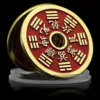Timeless Ticking Tales Unraveling the Fascinating History of Watches
The history of watches is a captivating journey through time, reflecting humanity’s quest to measure and control the passage of moments. From ancient civilizations to modern advancements, watches have evolved as symbols of precision, craftsmanship, and style. Their story begins thousands of years ago when the need for effective timekeeping emerged.
As technology advanced, so did the sophistication of timepieces. The transformation from simple methods of time tracking to intricate devices reveals our relentless pursuit of accuracy. Moreover, watches serve more than a functional purpose. They embody art, culture, and individual expression. Collectors and enthusiasts today cherish them not only for their utility but also for the nostalgic appeal they hold.
This article delves into pivotal milestones in the history of watches. Join us as we explore the origins of timekeeping, the emergence of mechanical watches, and the rise of the pocket watch as an elite status symbol.
The Origins of Timekeeping: From Sundials to Water Clocks
The quest to measure time began with simple sundials. Ancient Egyptians and Greeks crafted these devices utilizing the sun’s shadow. As the day progressed, shadows moved, indicating time’s passage. This innovative approach was pivotal, yet limited to daylight. The need for more accurate and night-time timekeeping inspired further exploration.
Water clocks, or clepsydras, next played a key role in history’s timeline. These devices, developed in cultures such as Babylon and China, employed the steady flow of water to mark time increments. Water clocks were revolutionary; they allowed for consistent timekeeping, irrespective of daylight. They represented a significant step towards more mechanized means of time tracking.
Despite their advancements, sundials and water clocks had limitations. They sparked curiosity and ultimately led to innovations in mechanical timekeeping. This natural progression paved the way toward clocks that would forever change how humanity perceived time.
The Birth of Mechanical Watches: Innovations in Timekeeping
The introduction of mechanical watches marks a significant milestone in the history of watches. By the late 13th century, advancements in clock mechanisms led to the creation of small, portable timepieces. This innovation enabled individuals to carry time with them, redefining the concept of timekeeping.
Early mechanical watches were intricate creations. They utilized gears and escapements, revolutionizing how time was measured. The precision of these devices captured the imagination of artisans and craftsmen across Europe, leading to increased demand for such inventions. By the 16th century, the first true watches emerged, showcasing elaborate designs and technical prowess.
The craftsmanship involved in producing these mechanical wonders became an art form. Many cultures began to treasure watches not only for their timekeeping ability but also for their beauty and intricacy. Thus, the birth of mechanical watches not only enhanced technology but also fostered a new appreciation for horology as a distinguished field.
The Transition to Pocket Watches: A Status Symbol for the Elite
The transition from mechanical watches to pocket watches marked a pivotal era. As watches evolved, their size diminished, leading to the birth of the pocket watch in the 16th century. Initially tailored for nobility and the wealthy, these watches quickly became symbols of status and sophistication.
Crafted from precious metals and adorned with intricate designs, pocket watches were not just timekeepers; they were masterpieces of engineering. They showcased the wearer’s wealth and taste, often passed down through generations. The introduction of features like gilded surfaces and jewel-encrusted cases heightened their desirability.
During the 19th century, pocket watches saw a surge in popularity due to advancements in mass production. This made them more accessible, yet they retained an air of elegance. The charm of pocket watches lies in their history, craftsmanship, and the stories they carry, many of which bring nostalgia to collectors and enthusiasts today.
The Advent of Wristwatches: A Revolution in Personal Timekeeping
The late 19th century marked a turning point in personal timekeeping with the advent of wristwatches. Originally, pocket watches were the standard for telling time. However, during World War I, soldiers needed a more functional solution. The wristwatch provided hands-free convenience. Soldiers could quickly check the time without fumbling in their pockets.
As the war ended, wristwatches became a stylish accessory for men and women alike. The design evolved, moving from purely functional to fashionable. Innovations soon saw miniature movements, allowing for diverse styles and materials. Wristwatches became more than just timekeepers; they transformed into personal statements.
By the mid-20th century, wristwatches had become ubiquitous. They signified status and sophistication. The revolution of wristwatches not only changed how we keep time but also how we express ourselves through style and technology.
Iconic Watch Brands and Their Historical Significance
Throughout the ages, certain watch brands have left an indelible mark on the history of watches. Brands like Rolex, Omega, and Patek Philippe have become synonymous with luxury, precision, and innovation. Each brand carries its own unique story and distinct contributions to horology.
Rolex pioneered the concept of the waterproof watch with its Oyster case in 1926. This innovation revolutionized watch design. Omega, known for its impeccable accuracy, became the first watch on the moon in 1969. Patek Philippe holds a legacy of craftsmanship, producing some of the most complicated mechanical watches ever made.
These brands influenced the evolving perceptions of timepieces. They transformed watches into symbols of achievement and success. Collectors sought after these iconic brands, viewing them as investments and heirlooms. Their storied histories continue to captivate enthusiasts and collectors worldwide.
The Evolution of Watch Technology: Quartz and Smartwatches
The history of watches took a technological leap with the introduction of quartz movements in the late 20th century. Quartz watches, first commercialized by Seiko in 1969, offered superior accuracy compared to traditional mechanical watches. They became a game-changer, allowing for mass production at lower costs.
However, the watch industry faced a new shift with the dawn of smartwatches. The first smartwatch, the Pebble, was released in 2013. It combined technology and traditional timekeeping, offering notifications and fitness tracking capabilities. Brands like Apple and Samsung quickly joined the market, turning smartwatches into powerful extensions of our smartphones.
This evolution reflects changing consumer needs. The wristwatch is no longer just a time-telling device. It is now a multifaceted gadget catering to lifestyle demands. This blend of classic craftsmanship and cutting-edge technology speaks to a dynamic future for watchmaking.
The Resurgence of Vintage and Retro Watches
In recent years, there has been a remarkable resurgence of interest in vintage and retro watches. Collectors and enthusiasts are drawn to the craftsmanship and character found in these timepieces. The appeal goes beyond mere functionality; it taps into nostalgia and a longing for authenticity in an increasingly digital era.
Brands have recognized this trend and now release limited editions inspired by vintage designs. This blend of old-school charm with modern technology has captivated a new generation of collectors. Vintage watches tell stories and offer a sense of history that contemporary styles cannot match.
Thriving online markets and events dedicated to watch collecting have further fueled this passion. Social media communities showcase various rare finds and restoration projects. Watch enthusiasts celebrate the artistry and engineering of bygone eras, ensuring that traditional watchmaking techniques remain alive.
Collecting Watches: A Timeless Hobby for Enthusiasts
Collecting watches is more than just a hobby; it’s a passion that spans centuries. Every timepiece tells a story. From the precision craftsmanship of Swiss models to the innovative designs of digital watches, there’s a rich history to explore.
The allure of collecting lies in the thrill of the hunt. Vintage finds, limited editions, and unique designs attract enthusiasts worldwide. Each watch has its own personality, and collectors often develop deep connections with their pieces.
Watches also serve as an intersection of art and technology. They reflect ingenuity, with movements intricately designed to showcase mechanical brilliance. For many, this special mix draws them into the world of horology.
As vintage timepieces gain popularity, the market continues to grow. Collectors appreciate not just the aesthetics, but also the stories behind each watch. It’s a timeless hobby that enriches lives, connecting people through shared histories and interests.
Conclusion: The Everlasting Allure of Watches and Their Stories
The history of watches offers a fascinating glimpse into human innovation. Timekeepers have evolved from simple sundials to complex mechanical masterpieces. Each era brought unique designs, reflecting changing societal values.
Watches are imbued with nostalgia. They remind us of significant moments and milestones. Whether it’s a family heirloom or a modern classic, each piece carries emotions, linking generations.
Collecting watches allows enthusiasts to curate their own narratives. Each addition to their collection serves as a testament to their personal journey, encapsulating unforgettable experiences.
As we delve deeper into the captivating history of watches, we uncover not just function but artistry and passion. This timeless appeal will continue to resonate with both collectors and admirers alike. The stories intertwined with each tick enrich our lives, keeping the magic of watch collecting alive.











